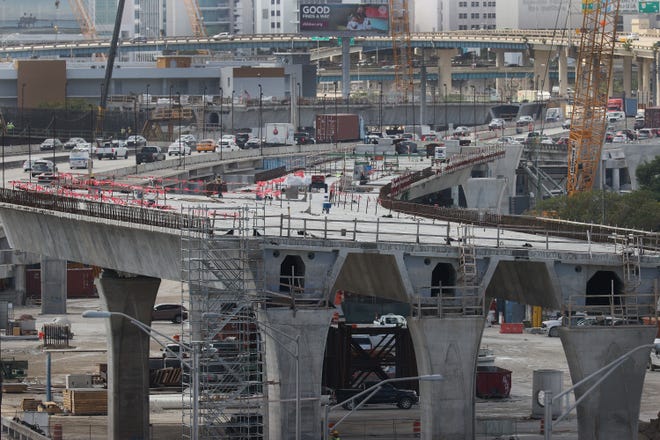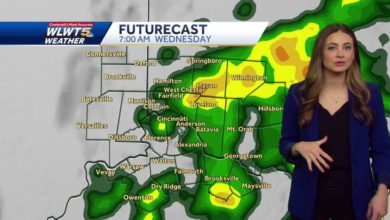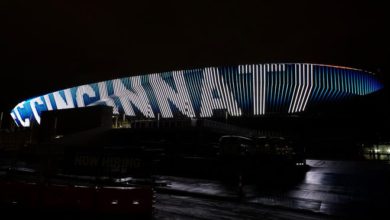
WASHINGTON — In his new $2.25 trillion infrastructure and jobs proposal, President Joe Biden promises to fix the 10 most "economically significant" bridges in need of reconstruction and repair 10,000 additional smaller bridges.
But the American Jobs Plan doesn't identify which of the nation's 618,000 bridges would receive the work.
Instead, Biden's plan would create a competitive grant program for a state to make the case to the Department of Transportation that one of its large bridges is deserving of a reconstruction or replacement.
Think of it as a competition, of sorts, for states to showcase their most dilapidated or outdated bridges based on condition or inability to manage increasing traffic volumes.Other factors could include a bridge's size or its importance to the regional or national economy.
"We expect that to be how it's structured," White House press secretary Jen Psaki. "That will all be discussed and finalized through our conversations with members of Congress."
More:'We can't delay': Biden proposes $2 trillion infrastructure, jobs plan funded by corporate tax hike

But the process to determine which 10,000 smaller bridges would get overhauls is less clear.
Psaki said other transportation projects in Biden's infrastructure plan – for example, modernizing 20,000 miles of highways and roads, which is also not specified – would be funded by formula grants. The same approach could extend to small bridges.
Such grants are awarded to cities and states based on calculations that can include mileage of a project, volume of traffic and population of an area. It is the most common way transportation projects receive federal dollars, allowing states to administer how dollars are used.
Overall, Biden's American Jobs Plan proposes $621 billion in transportation infrastructure such as roads, bridges, ports rail, Amtrak and electric vehicle stations.
Yet it would be enough to fix less than 1 out of every 4 of the 45,000 bridges considered "structurally deficient," according to the American Road and Transportation Builders Association's 2021 Bridge Conditions Report, which is based on an inventory from the Federal Highway Administration. The ARTBA, a lobbying organization for the road and transportation industry, estimates it would take 40 years to repair every poorly rated bridge at the current pace.
Recent high-profile bridge disasters in the U.S. include a pedestrian bridge in Miami that collapsed in 2018 over a busy road, killing six people; a 2007 collapse of Minneapolis bridge on Interstate 35 over the Mississippi River that killed 13; and a 1993 collapse of an Amtrak rail bridge in Mobile, Alabama, killing 47.
More:This rural Iowa bridge collapsed after a truck tried to cross it

Seven of the 10 most traveled structurally deficient bridges, according to the Federal Highway Administration's inventory, are in California, two are in San Juan, Puerto Rico, and one is in the Chicago area. Each is either an urban interstate or freeway bridge.
The busiest bridge considered structurally deficient is on US. Route 101 over Kester Avenue in Los Angeles. It was built in 1959 and sees 289,000 daily travelers. The second is also in Los Angeles – Interstate 5 over Marietta Street, built in 1948. This bridge has 258,000 daily travels.
Alison Black, chief economist at the ARTBA, said Biden's proposed funding would mark a "significant increase, across all the different modes, from what we have right now." Her group is also pushing for the reauthorization of the federal FAST Act (Fixing America's Surface Transportation Act), an Obama-era law that funds around $45 billion annually for federal highways and $12.3 billion for public infrastructure. The law expires at the end of September.
So which 10 large bridges could be most likely to win funding in Biden's plan?
"That is the burning question that we would all like to know," Black said. "It's really going to depend on the criteria they look at."

More bridges added as structurally deficient
Several bridges were listed as "structurally deficient' after 2020 that had not been previously, including:
- U.S. Highway 101 over the Los Angeles River, California
- Newburgh-Beacon Bridge over the Hudson River in Orange County, New York
- Corpus Christi Harbor Bridge in Corpus Christi, Texas
- Sidney Sherman Bridge on Interstate 610 over the Houston Ship Channel in Houston
- US. 377 over Lake Texoma on the border between Texas and Oklahoma
- J. Stanley Tunney Bridge over the Toms River in Ocean County, New Jersey
- US 90 East Bound over the San Jacinto River near Houston
- McClugage Bridge (Westbound) and the Cedar Street Bridge over the Illinois River in Peoria, Illinois
- Both spans of the I-494 Minnesota River Crossing in Hennepin County, Minnesota
- Sacramento River Bridge in Glenn County, California
- Jefferson Barracks Bridge in St. Louis
- Central Avenue Bridge over the Kansas River in Kansas City, Kansas
- Duwamish River Bridge (Westbound) in Seattle
And the states with the highest percentage of its bridges in poor condition are:
- West Virginia: 21%
- Iowa: 19.1%
- Rhode Island: 19%
- South Dakota: 17.7%
- Pennsylvania: 14.6%
- Maine: 12.7%
- Louisiana: 12.7%
- Puerto Rico: 12.1%
- Michigan: 10.8%
- North Dakota: 10.3%
The rankings are according to the American Road and Transportation Builders Association's 2021 Bridge Conditions Report, citing day from the Federal Highway Administration (FHWA) National Bridge Inventory (NBI)
Reach Joey Garrison on Twitter @joeygarrison.
Source link









